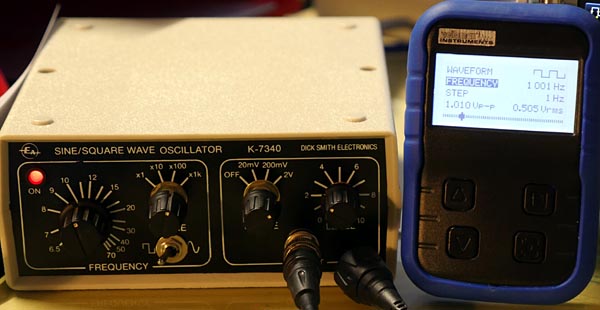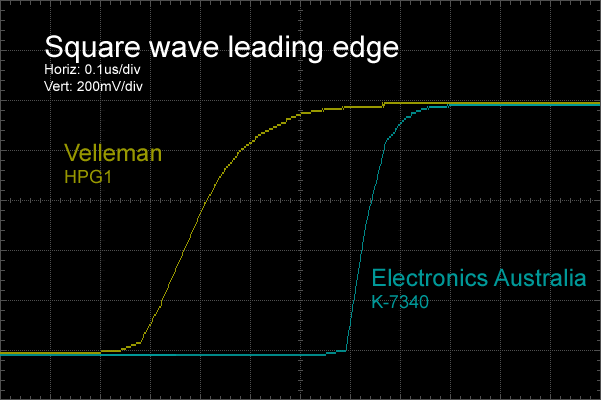In 1997, just starting out on this writing stuff, I decided I needed an audio signal generator. Off-the-shelf ones, to the extent that they were available at all, were way too expensive for me. However back in those days there was usually a solution for someone who could wield a soldering iron: make it yourself. Not that I was competent to design one, but the magazine Electronics Australia, before its regrettable demise, had already done that work, and Dick Smith, which then still catered to the electronics hobbyist, had kits.
So for $59.95 I purchased the K-7340 Sine/Square Wave Oscillator and put it together. Apparently not too poorly, for it still works these eighteen years later. As the name suggests, it delivers both sine and square waves. It works from around 6 hertz to around 70,000 hertz. Being analogue, it’s virtually impossible to select a specific frequency, although sometimes you can get close. I currently have it running at 1.00065kHz according to the frequency counter on my oscilloscope. At high frequencies it creeps up in frequency, but it has a fairly even output across its range. Not too bad at all.
If you’re interested, someone on ebay has a couple of the original kits for sale. Price: $169.95!
But now I’ve gone digital
, Recently I purchased a portable digital signal generator from Jaycar, the Velleman HPG1. 1Hz to 1,000,000Hz, sine, square and triangle. Here they are:
Let’s be clear here: the Velleman outperforms the old analogue generator in just about all respects by a considerable margin. Except one: rise time. Here’s the leading edge of a 1kHz 1 volt p-p square wave produced by both devices:
For a 10% to 90% rise, the Velleman takes about 0.26 microseconds. The ancient EA analogue unit takes 0.1 microseconds. If you compare the 0% to 100% rise times, it’s about 0.56µs for the Velleman, and 0.25µs for the analogue unit.
It seems that in some cases , simply switching something on and off can outperform a digital construction. At least in modestly priced gear. Note, the Velleman’s specs claim a rise time of 0.2µs , which seems roughly right (depending on how you measure it). Much better specs are available with a typical 20MHz entry level (ie ~$500) benchtop digital function generator. These promise figures like 12ns — 0.012µs — for the 10% to 90% rise time on that square wave. That’s just about an order of magnitude better than the old analogue unit.



3 Responses to Analogue vs Digital signal generation